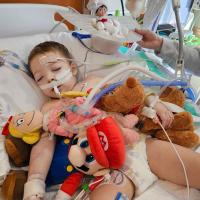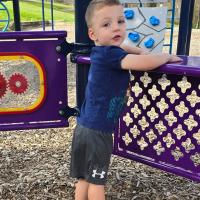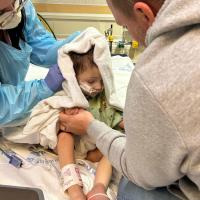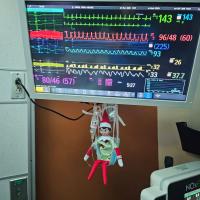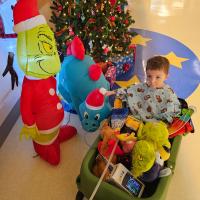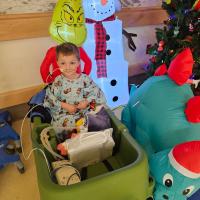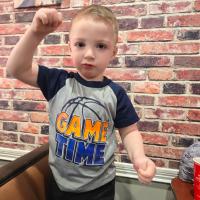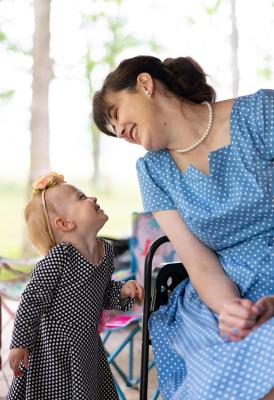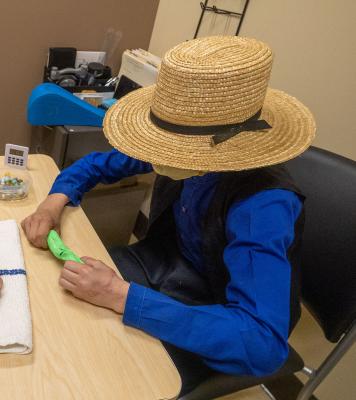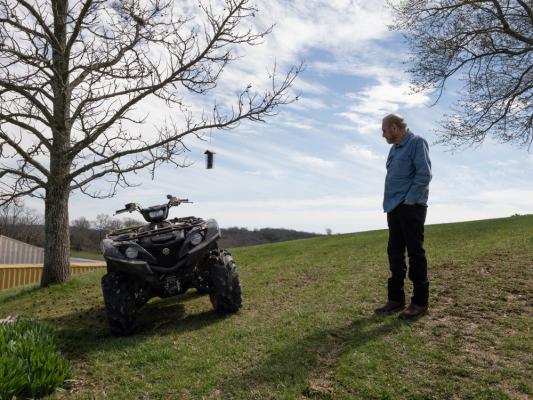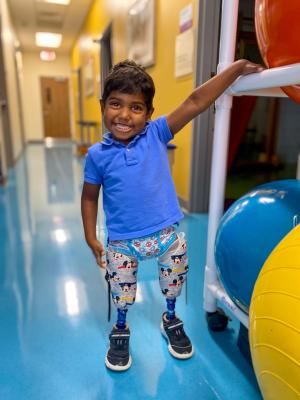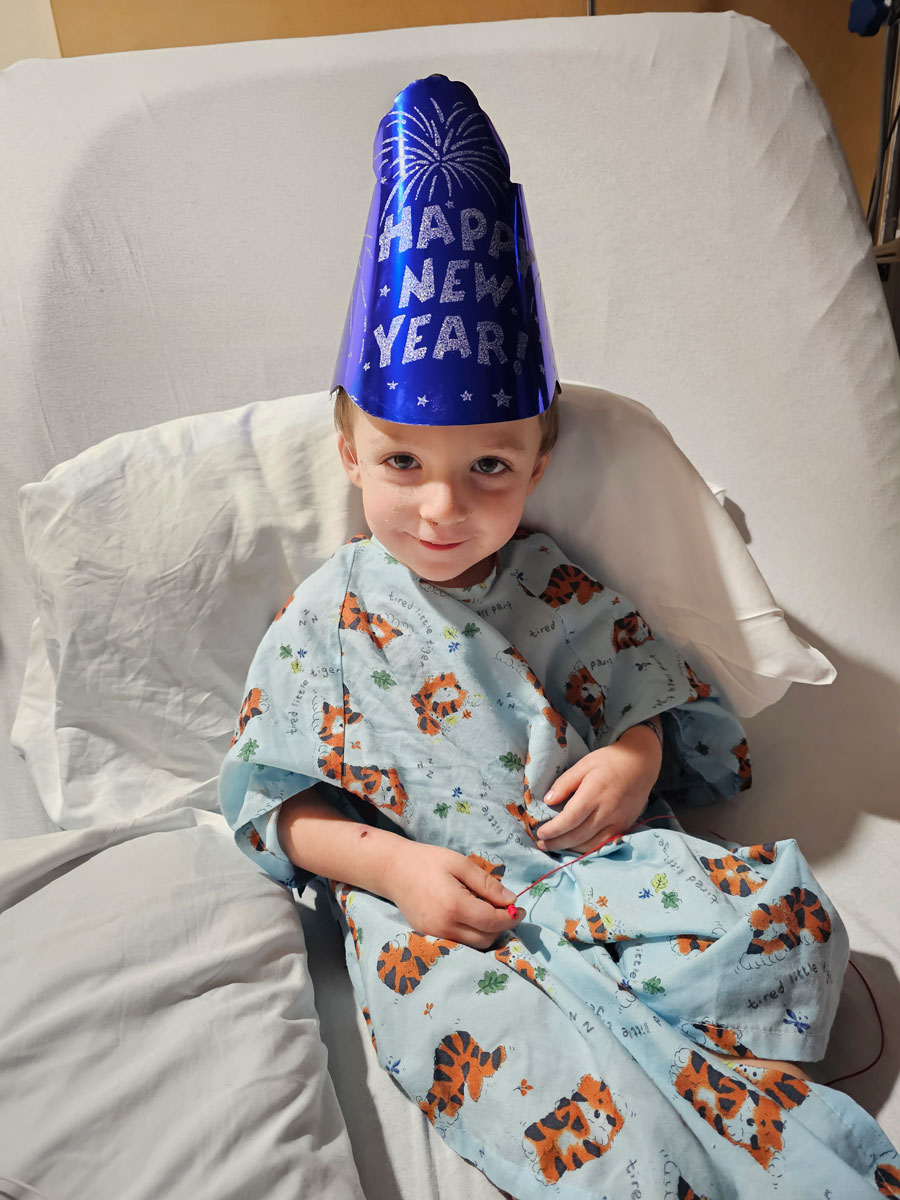
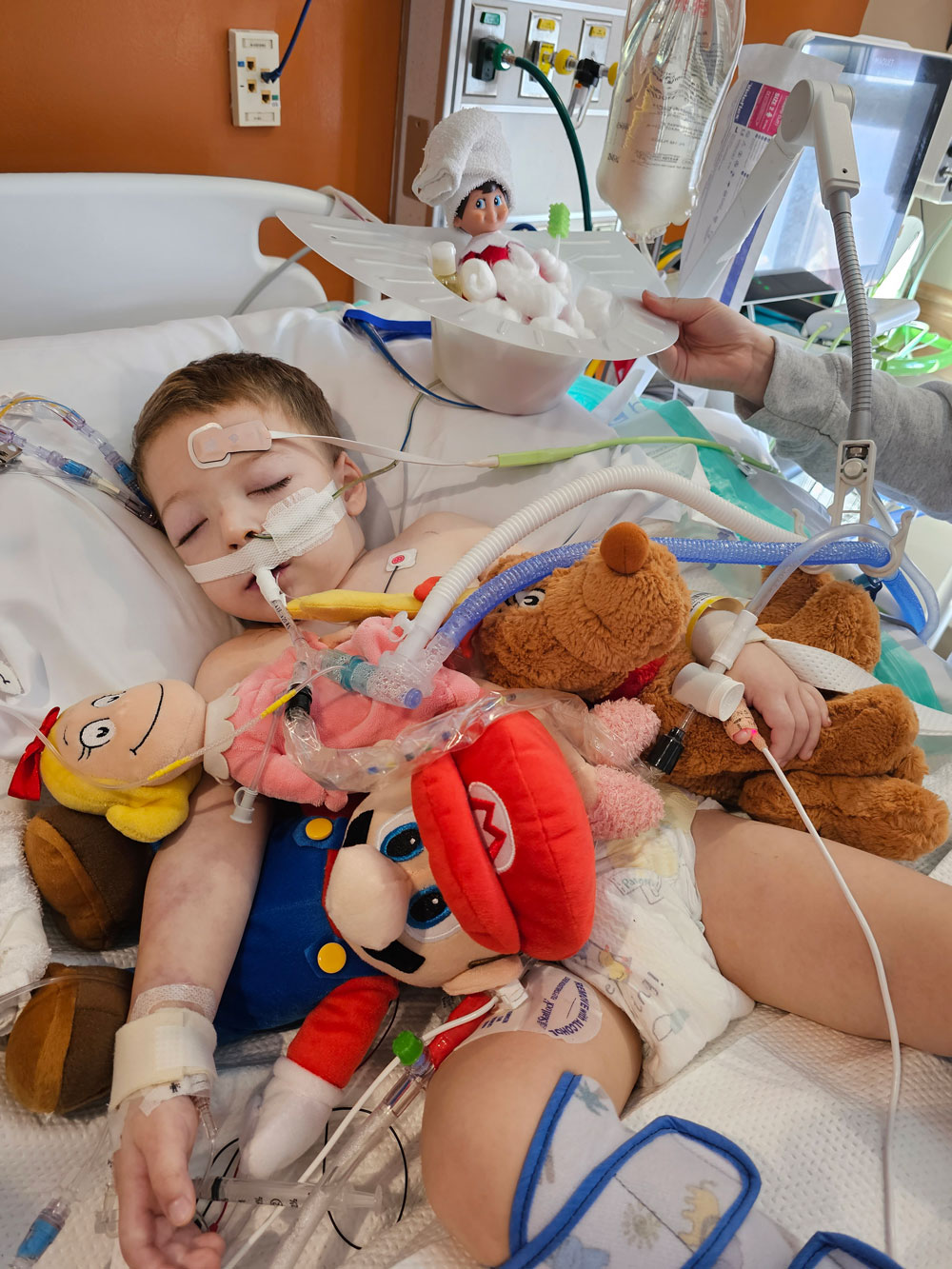
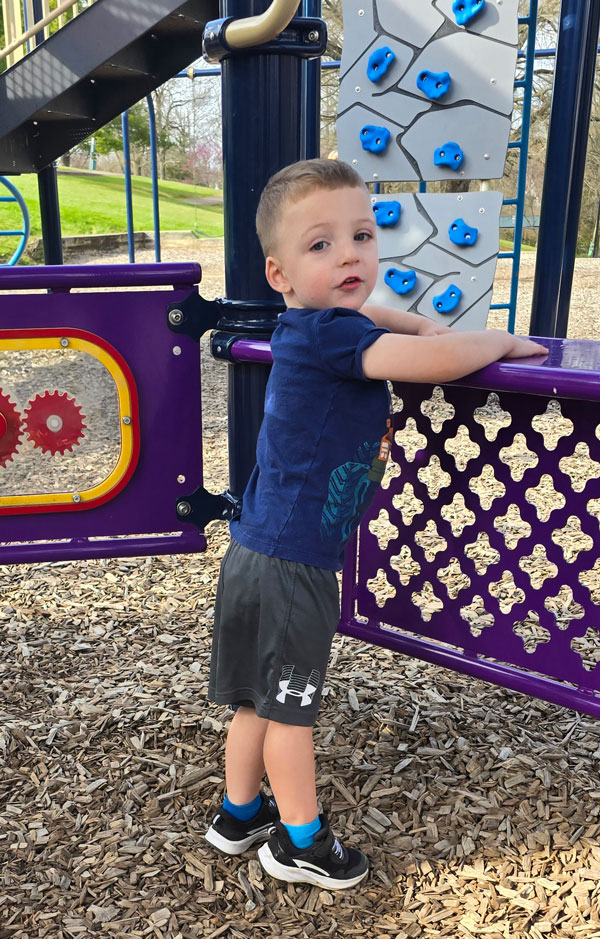

A Christmas Miracle
In early December 2023, Crew Stone was experiencing some congestion.
Crew’s parents took the 2-year-old to his pediatrician in Richmond. The pediatrician ran a few tests; Crew tested positive for respiratory syncytial virus (RSV). The family was told to go home, keep Crew hydrated and get him plenty of rest, while keeping an eye on his temperature.
A few days later, Crew’s fever spiked to 102.3. The Stones immediately took Crew to their local emergency room. An X-Ray indicated that pneumonia was present in his lungs.
The Stones were transferred to Kentucky Children’s Hospital to better treat the infection. By the time they arrived in Lexington, Crew’s condition had worsened; he struggled to breathe on his own. The Rapid Response Nursing Team quickly assessed Crew, with registered nurse Katie Turkington taking charge to alert the rest of the care team.
Dr. Ashwin Krishna, medical director of the Heinrich A. Werner Pediatric Intensive Care Unit, examined Crew and discovered he was starting to go into septic shock, a life-threatening condition in which the body has a dangerous reaction to an infection, causing the organs to function poorly. Crew needed to be on a ventilator as soon as possible.
“We came down to the Peds Emergency Department to see Crew after Katie alerted us that he was sick,” Dr. Krishna said. “When I saw him I knew he was very distressed and wasn’t going to be able to effectively breathe this way for much longer. I knew we had to intervene to help him and time was of the essence.”
“I was heartbroken,” said George, Crew’s father. “I don’t think we fully understood how serious it was until that moment they said he needed to be intubated. We weren’t allowed to be in the room during the procedure, so we sat in the hall. That was the longest thirty minutes of my life.
“For the first six days in the PICU, Crew was the sickest kid in the hospital. It was really starting to sink in. I didn’t know how we got here. We weren’t sure if he would make it through the night.”
RSV to something worse
Crew had developed a rare complication of pneumonia called necrotizing pneumonia, a serious condition that causes the destruction of lung tissue. It is associated with high morbidity and mortality. According to the National Institutes of Health (NIH), given its rarity, there are no guidelines to direct the care of patients.
“My wife and I looked at each other like, ‘How did this happen?’” George said.
Crew’s doctors had seen cases of necrotizing pneumonia before, so they knew what treatment methods were most effective. The infectious disease team ran multiple tests to see which type of antibiotics would target his specific infection. His doctors continued to give him fluids, IVs, blood pressure medication and other life support measures to keep him alive.
Six days later, the doctor on call made the decision to take Crew off the ventilator. At 9 a.m. the next morning, Crew quickly opened his eyes and began talking to his family. From there, a long road to recovery was ahead.
“At that point he was still in really bad shape,” George said. “He had X-rays each morning and they were gradually getting worse.”
Around the eleventh day in the hospital, Crew developed a large pneumothorax, also known as a collapsed lung. Dr. Jeremy Sites, pediatric critical care physician, put in a chest tube to remove the excess air that caused the collapse. A few days later, it returned, and Crew’s care team adjusted the position of the chest tube to alleviate the pressure.
“Crew quickly got much sicker as a result of this collapsed lung,” Dr. Sites said. “His breathing was very labored, and I was worried his heart was under strain due to compression, which can sometimes be caused by a pneumothorax. Even after placing the chest tube, we knew his lungs were still injured, weak, and prone to developing more pneumothoraces. Our team consulted Pediatric Surgery at that point, as video-assisted thorascopic surgery (VATS) — a surgical procedure sometimes required in the severest forms of pneumonia — was a possible treatment we believed Crew might need.”
On Christmas Eve — now two weeks into a hospital stay —Crew received an MRI that showed no improvement. His doctors considered a surgery to cut out the infected part of the lung. The surgery was a high-risk procedure, and there was a possibility that he might not live through it.
Back to the playground
The Stones decided to celebrate Christmas that night. Their whole family brought gifts. Kentucky Children’s Hospital also gives patients who are in the hospital around Christmas time gifts to help brighten their spirits.
“The hospital was awesome. They not only got Crew six or seven presents but they also got our daughters gifts,” George said. “The staff was wonderful the whole time. You could tell they cared about not just our son but every child in there.”
The Stones went to bed that night in disbelief that their 3-year-old boy would have a high-risk surgery on Christmas morning. However, the surgery didn’t happen.
After further discussion among the surgical team and consulting outside opinions, they opted not to do the surgery. Crew was presenting healthier on the outside, despite his scans, indicating that his body might be capable of healing without a dangerous surgical intervention.
“We look at it as a Christmas miracle because every day after that Crew got a little bit better,” George said.
Crew’s X-Rays began improving each day. Soon after, doctors pulled out his chest tube, and a few days later he was taken out of the PICU and placed in the general in-patient unit. On New Year’s Day, Crew was discharged.
“As crazy as it sounds, it was really scary for me to hear that he was going to be sent home because I was so used to staying awake all night watching his numbers and making sure he was okay,” George said.
It didn’t take long before Crew had his energy back. A week after he was released from the hospital, Crew was running around the house. Since then, he hasn’t looked back.
“He is doing awesome,” George said. “I would say that he has more energy than he did before he ever got sick.”
Crew is back to playing for hours on the playground and enjoying life as a toddler. He visited his lung specialist six weeks after his release, and his doctors are pleased to see improvement in his scans already.
“Between God, who we think had big plans for Crew with his Christmas miracle, in tandem with the doctors and the nurses at Kentucky Children Hospital, we are so grateful,” George said.

